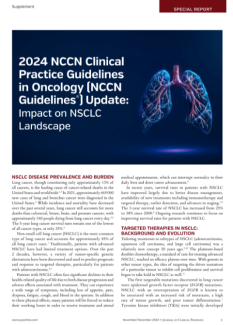The Current State of Health Care in Transition
Significant changes across multiple US government agencies are set to reshape health care delivery. These changes will undoubtedly impact the provision and reimbursement of health care services. As noted in this issue’s Transformative Employer Trends column (page 28), US health spending increased by 7.5% ($4.9 trillion) in 2023, driven by an 11.5% rise in private health insurance spending and a large increase in Medicare expenditures. Additionally, double-digit cost increases persist at unsustainable rates. As a result, employers will be taking a more active role in shaping health care, recognizing their responsibility as stewards of workforce health. Vogenberg notes that key drivers of change will include advancements in value-based care, patient experience, mental health, health equity, innovation, and transparency.
In our From the Field article (page 6), Chau et al drive the message of value-based care and transparency and confirm the provider perspective that rapid advancements in oncology have led to an exponential rise in treatment costs, making the value proposition of anticancer agents more important than ever. The cost of oncology treatments increased more than 10% in 2023, and we are waiting to see the trend for 2024. As a result of this cost trend, Chau et al turned their attention to active deimplementation strategies to achieve meaningful reductions in low-value oncology care as part of the Evolent oncology solution. Low-value treatment regimens are defined as regimens that offer substantially poorer outcomes or cost much more than other options that deliver similar clinical benefits, thus focusing attention on their high-value clinical pathway offering. Key components of the program include targeted provider awareness through the Evolent provider solution and medical teams, system notifications, case-based peer-to-peer discussions, practice scorecards, and a pay-for-performance program. As a result, requests for low-value regimens declined by 15.5%, with approval rates dropping 20.1%—a positive shift toward evidence-based care.
From the payer perspective, there is a growing push to shift infusions to more cost-effective settings. However, such transitions are not risk-free, as in the case of the infusing bispecific medications. As noted in my Access Support column (page 26), studies of treatment-related adverse events for bispecific antibodies demonstrate that the prevalence of infection, neutropenia, cytokine release syndrome, and immune effector cell-associated neurotoxicity syndrome is 35%, 31%, 45%, and 12%, respectively. As a result, not all practices are prepared to administer these agents. To ensure consistent care coordination, practices and cancer centers must establish clear workflows for managing adverse events, particularly when determining hospital admission vs outpatient care and during care transitions. To support practice preparedness, McKesson and the Association of Cancer Care Centers have developed readiness guides, addressing key challenges in bispecific antibody administration, including treatment setting, adverse event management, and care coordination.
We hope you find these articles—and the other submissions in this issue—both insightful and relevant, as they all contribute to addressing the challenge of rising health care costs. As always, the Journal of Clinical Pathways is eager to receive submissions of your work and research in the space throughout the year.


















